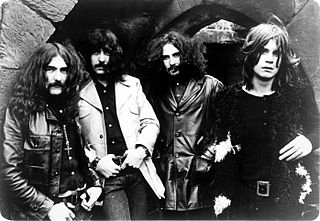
Black Sabbath were an English rock band formed in Birmingham in 1968 by vocalist Ozzy Osbourne, guitarist Tony Iommi, bassist Geezer Butler and drummer Bill Ward. They are often cited as pioneers of heavy metal music. The band helped define the genre with their first three albums Black Sabbath (1970), Paranoid (1970) and Master of Reality (1971). Following Osbourne's departure in 1979, the band underwent multiple line-up changes, with Iommi being the only constant member throughout their history.
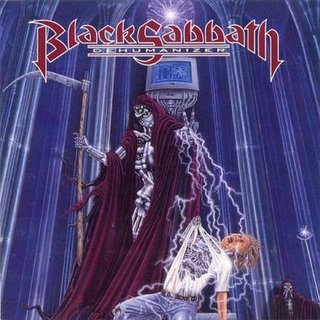
Dehumanizer is the sixteenth studio album by English rock band Black Sabbath. It was first released on 22 June 1992 in the UK by I.R.S. Records and on 30 June 1992 in the US by Reprise Records.

Terence Michael Joseph "Geezer" Butler is an English retired musician and songwriter. He is best known as the bassist and primary lyricist of the heavy metal band Black Sabbath. He has also recorded and performed with Heaven & Hell, GZR, Ozzy Osbourne, and Deadland Ritual.

Sabotage is the sixth studio album by English heavy metal band Black Sabbath, released in July 1975. The album was recorded in the midst of a legal battle with the band's former manager, Patrick Meehan. The stress that resulted from the band's ongoing legal woes infiltrated the recording process, inspiring the album's title. It was co-produced by guitarist Tony Iommi and Mike Butcher.
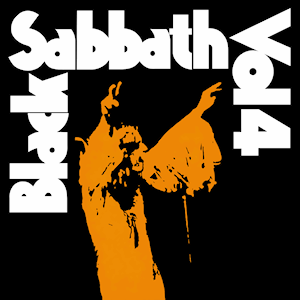
Vol. 4 is the fourth studio album by English heavy metal band Black Sabbath, released in September 1972. It was the first album by Black Sabbath not produced by Rodger Bain; guitarist Tony Iommi assumed production duties. Patrick Meehan, the band's then-manager, was listed as co-producer, though his actual involvement in the album's production was minimal.
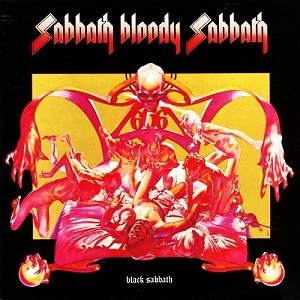
Sabbath Bloody Sabbath is the fifth studio album by English heavy metal band Black Sabbath, released in November 1973. It was produced by the band and recorded at Morgan Studios in London in September 1973. The writing process for the album, which began in Los Angeles, California, was initially hampered in part by the band's substance abuse and fatigue following their 1972–1973 world tour in support of their previous album, Vol. 4. The band then relocated to Clearwell Castle in the Forest of Dean, Gloucestershire, England, where guitarist Tony Iommi conceived the main riff of what became the album's title track and lead single.

Born Again is the eleventh studio album by English heavy metal band Black Sabbath. Released on 12 September 1983, it is the only album the group recorded with lead vocalist Ian Gillan, best known for his work with Deep Purple. It was also the last Black Sabbath album for nine years to feature original bassist Geezer Butler and the last to feature original drummer Bill Ward, though Ward did record a studio track with the band fifteen years later on their 1998 live album Reunion. The album has received mixed reviews from critics, but was a commercial success upon its 1983 release, reaching No. 4 in the UK charts. The album also hit the top 40 in the United States. In July 2021, guitarist and founding member Tony Iommi confirmed that the long lost original master tapes of the album had been finally located, and that he was considering remixing the album for a future re-release.
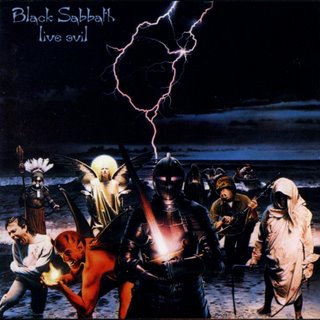
Live Evil is the first official live album by English heavy metal band Black Sabbath. The previously released Live at Last (1980) was not sanctioned by the band. Live Evil peaked at number 37 on the Billboard Pop Albums chart.

William Thomas Ward is an English musician. He was a co-founder and the original drummer for the heavy metal band Black Sabbath. Ward helped found Black Sabbath in 1968 alongside bandmates Ozzy Osbourne, Tony Iommi (guitarist) and Geezer Butler (bass).

Heaven and Hell is the ninth studio album by English heavy metal band Black Sabbath, released on 18 April 1980. It is the first Black Sabbath album to feature vocalist Ronnie James Dio, who replaced original vocalist Ozzy Osbourne in 1979.

Technical Ecstasy is the seventh studio album by English heavy metal band Black Sabbath, produced by guitarist Tony Iommi and released on 25 September 1976 by Vertigo Records. The album received mixed reviews from critics but was a commercial success, peaking at number 13 on the UK Albums Chart and number 51 on the US Billboard 200 Album chart, later being certified Gold by the RIAA in 1997.

The Eternal Idol is the thirteenth studio album by English heavy metal band Black Sabbath, released in November 1987 (UK) and in December 1987 (US). It is the first Black Sabbath album to feature vocalist Tony Martin. It spent six weeks on the Billboard 200 chart, peaking at 168. It was also the last full album of new material by Black Sabbath to be released by Warner Bros. Records, and the final album through their original label Vertigo Records until the release of 13 in 2013.
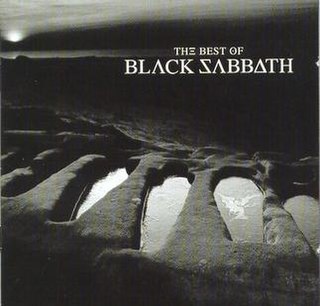
The Best of Black Sabbath is a double CD compilation album by Black Sabbath released in 2000 on the Sanctuary Records label. Its 32 songs are presented chronologically from the band's first 11 albums, spanning the years 1970 to 1983. Black Sabbath's classic six-album run, from 1970s debut Black Sabbath through 1975's Sabotage is celebrated with three to six songs from each album. Original vocalist Ozzy Osbourne's subsequent final two albums with the band, 1976's Technical Ecstasy and 1978's Never Say Die!, are represented by one and two songs, respectively. Replacement Ronnie James Dio's early 80's stint fronting the band on two albums is acknowledged with the title track of 1980's Heaven and Hell and a track from 1981's The Mob Rules. The compilation closes with a song from 1983's attempted rebirth, Born Again, former Deep Purple vocalist Ian Gillan's sole album with the band. The Best of Black Sabbath does not include any later material with vocalists Glenn Hughes, Tony Martin (1986–96) or the returning Dio.

Beverley Bevan is an English rock musician who was the drummer and one of the original members of the Move and Electric Light Orchestra (ELO). After the end of ELO in 1986, he founded ELO Part II.

Anthony Philip Harford, better known by his stage name Tony Martin, is an English heavy metal vocalist, best known for his time fronting Black Sabbath, initially from 1987 to 1991 and again from 1993 to 1997. Martin was the band's second-longest-serving vocalist after Ozzy Osbourne. He has since been involved in many other projects.
David Thomas Donato was an American singer known for his involvement in Black Sabbath. He recorded several demos with the band and rehearsed throughout 1984 and 1985.
The Heaven & Hell Tour was the ninth world concert tour by Black Sabbath between April 1980 and February 1981 to promote their 1980 studio album, Heaven and Hell. The tour marked the band's first live shows with vocalist Ronnie James Dio, who replaced original vocalist Ozzy Osbourne the previous year; drummer Vinny Appice, who replaced original drummer Bill Ward in the middle of the tour's North American leg after Ward suddenly left the band due to personal issues; and keyboardist Geoff Nicholls, who played keyboards on the Heaven and Hell album and accompanied the band on this tour as a sideman. For a portion of the North American tour, which was popularly known as the "Black and Blue Tour", Black Sabbath co-headlined with Blue Öyster Cult, with whom they shared a manager, Sandy Pearlman. The arrangement reportedly set attendance records but caused friction between the two bands as well as between Black Sabbath and Pearlman.
The Reunion Tour was a concert tour by heavy metal band Black Sabbath, celebrating the band's 2012 reunion and in support of their album 13, which was the group's first album to feature their original singer Ozzy Osbourne since 1978's Never Say Die! and original bassist Geezer Butler since 1994's Cross Purposes.
The Never Say Die! Tour was a concert tour by the English heavy metal band Black Sabbath. The tour began on 16 May 1978 in Sheffield and ended on 11 December 1978 in Albuquerque, New Mexico. It was the last full tour with Ozzy Osbourne until the band reunited for Ozzfest 1997.















